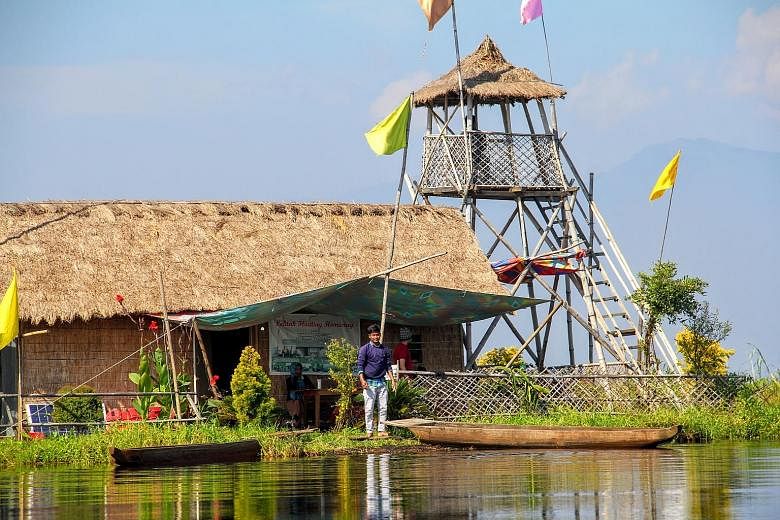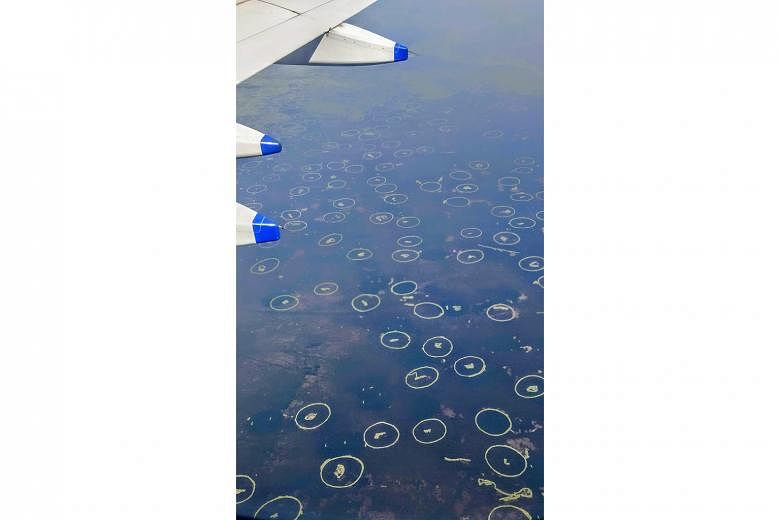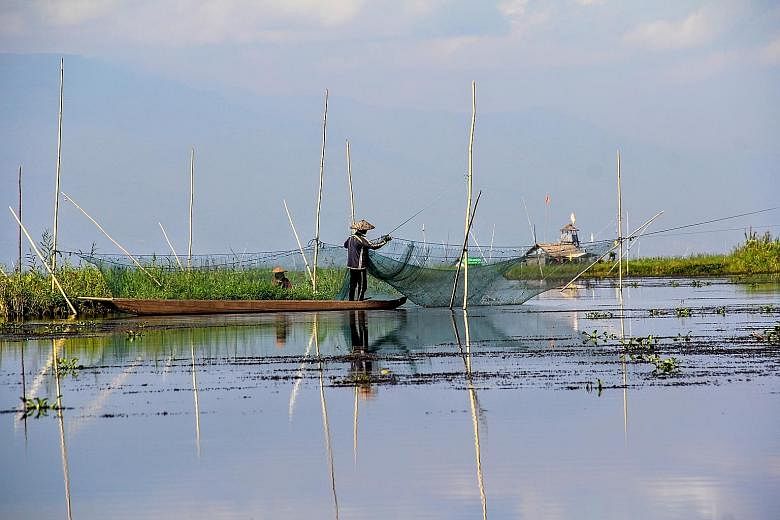From the air, the floating islands of Lake Loktak look like iridescent green rings.
Soon, I am walking on these saucer-like mats of biomass made of intertwined soil and organic matter. It feels like I am walking on water - or balancing on spongy trampolines that sway gently from side to side.
When our boatman steers across this vast lake in India's north-eastern state of Manipur, we encounter fishermen poised on small canoes while they cast fishing nets and lay bamboo fish traps.
The floating islands, called phumdis, are often moved around by the ingenious fishermen to form circular fish ponds, which look like rings from up high. They lay massive nets in the ponds and leave them undisturbed for about 15 days. To attract fish, they add feed like rice bran or grains.
Many fishermen live in basic bamboo huts on the phumdis, which are reinforced by layers of bamboo and anchored with heavy rock.
Pied kingfishers fly above our heads and swoop down on their catch.
The lake is also a paradise for bird lovers. More than 100 species are found here and some, like the Manipur Bush quail, are endangered.
Our guide, Rajib, likens the phumdis to icebergs. One-fifth of their mass is above the surface. The rest is obscured below the water, where the roots reach the lake bed and absorb nutrients during the dry season and rise with the water levels in the monsoon season.
Along the shore lie piles of dredged vegetation, which make great manure for vegetables.
Close to the lake, I see a street lined with stalls where the indigenous Meitei women, their foreheads smeared with sandalwood paste, sell smoked fish caught from the lake of 240 sq km. This is about one-third the size of Singapore.
At night, from our hilltop hotel, we see flickering lights on the lake and learn that fishermen tie rechargeable bulbs to bamboo poles to aid them in the dark. Also, the lights help in attracting insects, which are used as bait for the fish.
-
COVID-19 ADVISORY
-
For daily updates on Covid-19 cases in India, go to www.mygov.in/covid-19. For updates on India's entry requirements, go to bit.ly/3gbxnvl
The lake is also home to the Keibul Lamjao National Park, which straddles a 40 sq km phumdi. The park protects the endangered sangai, a deer with distinctive antlers that seem to protrude from the brow. The animal was believed to be extinct until it was rediscovered in 1951 and then conservation efforts were started to protect it.
The dainty deer has special hooves so it can walk on the phumdis. But it is in danger of losing its habitat because the building of a barrage has changed the hydrology of the lake.
We take a boat ride through the park, gliding through slim waterways fringed by tall reeds, elephant grass and purple clumps of water lilies, as gargantuan dragonflies skim the surface.
At the end of a channel, we clamber off the boat and up a steep slope. From this vantage point, we see the golden grass that extends to the horizon and spot our first sangai deer in the distance. The creature is so shy that even the slightest sound or movement can drive it away.
The winds of change have swept over the lake, altering the ecosystem and habitat.
The commissioning of the Ithai Barrage in 1983 as part of a hydroelectric power project has raised the level of the water, so the phumdis cannot sink and absorb nutrients from the lake bed. The barrage has also blocked the migratory routes of the indigenous fish, diminishing their numbers.
I think about how India is battling the Covid-19 pandemic and how its Manipur state, which fought insurgency successfully in the past, is fighting a new battle to preserve a cherished lake. I say a silent prayer that the lake and its life-giving floating islands will not be vanquished.
• Kalpana Sunder, a freelance writer based in Chennai, India, loves offbeat destinations.



